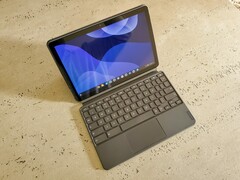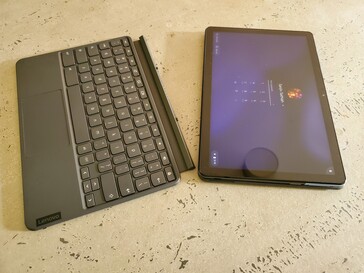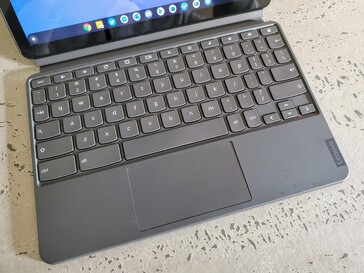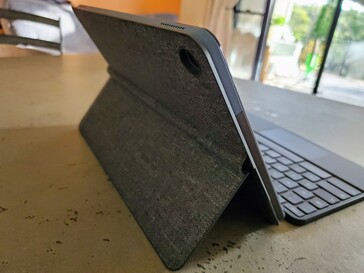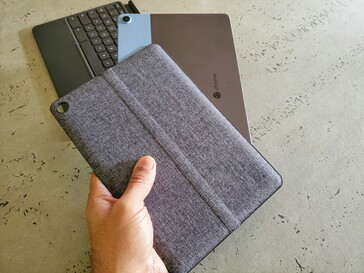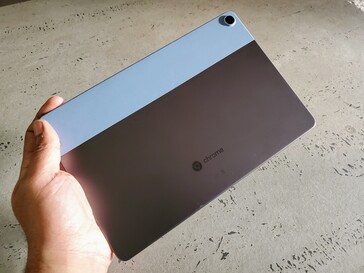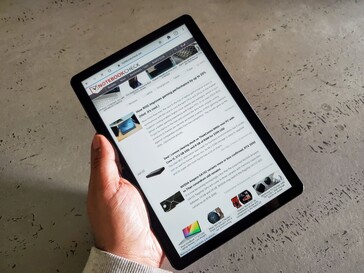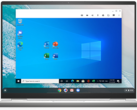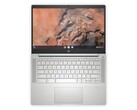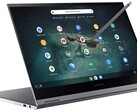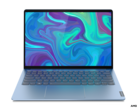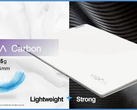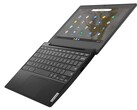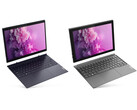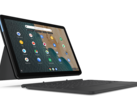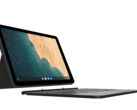When netbooks were briefly in vogue in around 2008, Steve Jobs famously remarked that “We don’t know how to make a US$500 computer that’s not a piece of junk, and our DNA will not let us ship that.” Fast forward to 2020, and Lenovo is asking us to believe that it can deliver a 2-in-1 Chromebook for under US$300 that isn’t a piece of junk. While the late Steve Jobs may or may not have been impressed with the ChromeOS user experience, we’re pretty sure he’d be quite impressed with the hardware that Lenovo has been able to deliver at this very modest price point.
Since it was first announced at CES 2020, the Lenovo Chromebook Duet (also known as the IdeaPad Duet Chromebook in some markets), has caught the eye. Not because it offers stellar specifications, but because of its price point and what it promises to offer - a Google Pixel Slate-like experience on the cheap. When it launched in October 2018, the Pixel Slate started at US$599 for an Intel Celeron model with 4GB of RAM and without an included keyboard accessory. Lenovo’s Chromebook Duet starts from US$279 for the 64 GB model and runs to just US$299 for the 128 GB model, keyboard cover included.
Surely, Lenovo has had to cut some corners?
The Display:
If there is one aspect of a device that is absolutely critical to the user experience, it is the display. Thankfully, Lenovo has not cut any corners with its choice of a 10.1-inch IPS 16:10 aspect ratio 10-point multitouch display that features a better than Full HD 1920x1200 pixel resolution for 224 ppi pixel density. This compares favorably with Apple’s 10.2-inch iPad which offers a 264 ppi density. The Chromebook Duet also sports a 400 nits of brightness level which again compares favorably with the 10.2-inch iPad which delivers 500 nits of brightness. It’s not quite on par, but the iPad starts from US$329 for a paltry 32 GB of storage and certainly doesn’t come with a keyboard. For getting things done, or playing some games, surfing the web or watching a movie, it is hard to fault the Chromebook Duet display at this price.
The Build Quality, Design and Materials:
Another pleasant surprise about the Lenovo Chromebook Duet is that it sports excellent build quality and choice of materials. It is made from an aluminum chassis and is a two-tone combination of “Iron Gray” aluminum on the rear panel joined with “Ice Blue” plastic. The choice of plastic here, rather than going all aluminum, is a clever way of keeping costs down while retaining its looks and ensuring unimpeded wireless connectivity. Naturally the display is glass coated, although Lenovo doesn’t specify the type - it is scratch resistant but obviously not the kind you might find on Galaxy Tab S6. The device is also just 7.35 mm thick and weighs 450 grams - the only slight knock is that its bezels aren’t ultra thin, but that is a very minor gripe.
The Performance:
The biggest question mark hanging over the Chromebook Duet then is its performance. It is fitted with a MediaTek Helio P60T SoC. This is an octa-core chip with four higher performance ARM Cortex-A73 cores clocked at 2.0 GHz mated to four power-efficient ARM Cortex-A53 cores. This is joined by an ARM Mali G72 MP3 integrated GPU clocked at 800 GHz, all of which is paired to 4 GB of LDDR4X RAM. This is certainly nothing to write home about, but we have found it to be more than adequate to keep things ticking over nicely in everyday general-purpose use.
Given that the ARM Cortex-A73 cores were found in the once high-performance Qualcomm Snapdragon 835, it should come as no surprise that the SoC delivers sufficient performance to keep things pretty snappy. Similarly, the multicore Mali GPU is more than adequate for playing just about any 3D mobile game you will find on the Play Store. Although the RAM is rather limited at 4 GB, it is at least one of the fastest types of mobile RAM on the market and is fit for purpose. You can seamlessly run an Android app snapped to one side while browsing the web in the Chrome browser on the other without any signs of lag.
Keyboard Cover and Pen Support:
The included keyboard cover features one of Lenovo’s signature (slightly) scalloped keyboards. For a device with a 10.1-inch display, the width of the keyboard has been compromised and Lenovo has had to do some downsizing to cram in a usable keyboard. Despite this, it is reasonably comfortable to type on while also feeling sturdy and well made. If you are looking for a full-time productivity machine, this might get on your nerves after a while. But that really isn’t the point of this device. School children will naturally have smaller hands anyway, while it remains more than serviceable for taking into meetings if you are a business professional. The integration of Chrome OS-specific function keys is also handy.
It is also worth noting that the weight of the keyboard on its own is 250 grams while the separate stand cover that magnetically attaches to the rear of the Duet weighs in at 220 grams. Combined with the tablet, which weighs 450 grams, the whole package weighs in at 920 grams. All told, it is a little heavier than we would like, but conversely, it does feel sturdier and well made as a result. Furthermore, anything that can allow you to get as much done as the Duet does on the go in terms of Office-style productivity that weighs in at under a kilo is a win.
As an added bonus, the Lenovo Chromebook Duet also supports active stylus input with any USI compatible stylus. The Universal Stylus Initiative (USI) is composed of members from a wide range of technology companies including Google, Intel, Lenovo, Dell, HP, and others to create an active stylus technology that works across devices, regardless of manufacturer. This means, if you already have an active stylus from one maker, there is a good chance it will work with another manufacturer’s device. We didn’t have one on hand to test as there are only a couple on the market, but it undoubtedly adds to the Chromebook Duet’s utility.
Battery Life, Audio and Connectivity:
Although we haven’t yet run the Chromebook Duet through a formal battery test, our anecdotal experience is that Lenovo’s claim of 10 hours is probably a little generous as that is purely based on video-playback performance alone. If you are going to use the device frequently throughout the day for a variety of tasks indoors and out, you can reasonably expect around 7- 8 hours on the go. Given the price point, that is still some good going when there are more expensive laptops that don’t last as long. It boils down to the fact that Lenovo has been generous enough to include a solid 7,000 mAh battery (27 Wh) as part of the package and it gets the job done.
If there is another corner that has been trimmed a little, it is in the Duet’s connectivity. It includes just a single USB-C 2.0 port and not even a 3.5 mm jack. That being said, Lenovo has been kind enough to include a USB-C to 3.5 mm dongle in the box. Speaking of audio, the stereo Dolby audio speakers do an adequate job of audio playback, but they certainly aren’t anything special. Surprisingly, it includes a dual-band MIMO antenna for Wi-Fi 5 connectivity - a definite plus - while it also sports Bluetooth 4.2 connectivity. There is no microSD card support either.
Conclusion:
The Lenovo Chromebook Duet is outstanding value for money and is ideal as a secondary productivity and entertainment companion. It is also the perfect device for a school student from elementary school through to college. It is beautifully made, sports contemporary looks and offers decent performance - even without the included keyboard accessory, it puts forward a pretty decent argument from a value perspective. That it includes a keyboard accessory and also supports active stylus input makes it an absolute “no-brainer” in regard to choice. The only trouble you may have will be trying to find one, as demand is, unsurprisingly, exceeding supply.
Source(s)
Own




